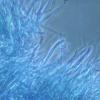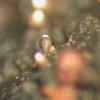
18-12-2025 21:17
Pol DebaenstThe identification took me to Byssonectria deformi

15-12-2025 07:09
 Danny Newman
Danny Newman
indet. Rutstroemiaceae sp. on unk. fallen leavesMc

19-12-2025 10:10
Patrice TANCHAUDBonjour, récolte réalisée en milieu dunaire, a

18-12-2025 17:23
 Bruno Coué
Bruno Coué
Bonjour,je serais heureux d'avoir votre avis sur c

18-12-2025 18:07
Margot en Geert VullingsThese plumes were found on rotten wood.They strong

17-12-2025 18:35
 Michel Hairaud
Michel Hairaud
Bonjour à tous/Hi to everyone I am passing along

15-12-2025 15:48
 Danny Newman
Danny Newman
Melanospora cf. lagenaria on old, rotting, fallen

15-12-2025 15:54
 Johan Boonefaes
Johan Boonefaes
Unknown anamorph found on the ground in coastal sa

15-12-2025 21:11
 Hardware Tony
Hardware Tony
Small clavate hairs, negative croziers and IKI bb
It occurs on exudate of wounds of Prunus pensylvanica in PEI and NB Canada.
The ascomata are about 200-400 um tall and 150-200 um wide, and urceolate in shape. The walls are light brown and become melanized as it matures. Internally, the walls consist of linear, periclinally arranged hyphae. The asci are narrowly cylindric (c. 35 x 4 um), and lack an evident apical apparatus. They break down at maturity, producing a dry mass of spores that collects around the ostiole, and within the cavity in the upper part of the ascoma. Externally, the spore mass appears white to very pale yellow. The ascospores are uniseriately arranged, 8 per ascus, colourless, unornamented, and c. 3-4 x 2-3 um. They are ellipsoidal, but slightly compressed on the long axis.


